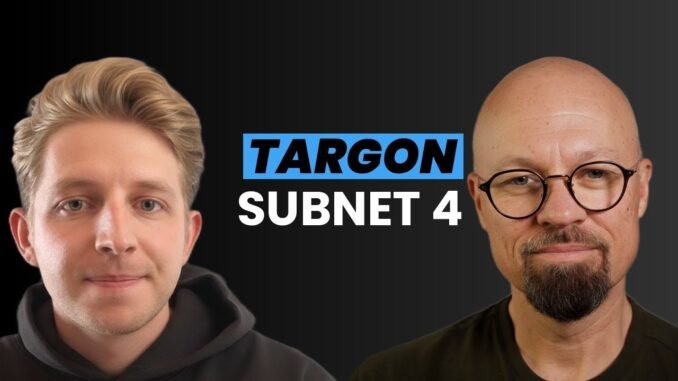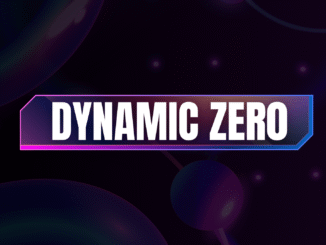
In a Hash Rate Podcast, Mark Jeffrey sat down with James Woodman, co-founder of Targon (Subnet 4 on Bittensor), to talk about Targon’s $10.5 million raise, its latest security breakthrough, and how decentralized compute is evolving under Bittensor’s new economic model.
It was a lively discussion (see the video below), one that touched on funding, infrastructure, governance, and the big philosophical questions shaping the future of decentralized AI.
“The Soul of the Company Hasn’t Changed”
Jeffrey opened with a congratulatory tone, asking about the recent raise led by Joseph Jacks and OSS Capital, with participation from high-profile investors like Tobias Lütke of Shopify and Ram Shriram, one of Google’s early backers.
“Ten and a half million is no small amount,” Jeffrey noted. “How has that changed things for Targon?”
Woodman smiled. “Honestly, not much,” he replied. “It’s forced us to focus, sure, but it hasn’t changed the soul of the company. We’re still building the same mission-driven infrastructure, just with a little more fuel.”
He added that the raise helped Targon expand its capacity while keeping its ethos intact. “We didn’t want investors who would change who we are. And we got that.”
Backing Ridges and Strengthening the Ecosystem
The conversation then turned to Ridges (Subnet 62), one of Bittensor’s most active projects, which recently launched its product using Targon’s infrastructure.
Jeffrey mentioned the collaboration with clear admiration. “I hear Ridges uses you quite a bit,” he said. “Maybe more than anyone else.”
Woodman nodded. “That’s right. Shakeel and his team are fantastic. We treat him as a colleague, not a customer. When someone in Bittensor needs a feature, we build it. We move fast because we all benefit from each other’s success.”
Both agreed that such subnet collaborations are a sign of Bittensor’s growing maturity; proof that cooperation, not competition, is driving innovation.
Fighting Weight Copying With Real Hardware
Perhaps the most striking part of the interview came when Woodman explained Targon’s latest technical breakthrough, TVM.
Targon Virtual Machine (TVM) is a system that forces validators to prove they’re running real hardware.
“Weight copying has been one of Bittensor’s biggest leaks,” he said. “People copying others’ work, getting paid without doing anything. With TVM, that’s over. Validators now have to prove they’re running real, verified machines.”
Jeffrey leaned in. “So this completely stops weight copying?”
“For the first time, yes,” Woodman confirmed. “Each validator must pass attestation from Intel, AMD, or Nvidia. If you can’t prove ownership, you don’t earn. It’s that simple.”
Jeffrey called it “a game changer”, one that could help the network recapture massive value that had previously been lost to inefficiency.
Building Within Bittensor First
Jeffrey then asked about Targon’s earlier ambition to onboard enterprise clients. “You once talked about targeting Fortune 500 companies,” he said. “Is that still on the table?”
Woodman laughed. “Not right now. We realized we need to strengthen our home base first. Bitensor is our Normandy. Once we’ve built a strong economy here, the rest will follow.”
He explained that working with subnets like Ridges and Dippy (Subnet 11) has proven more impactful than chasing outside clients. “We’re still getting calls from enterprises, but our best work happens inside Bittensor. That’s where the real growth is.”
On TAO Flow and Economic Discipline
When Jeffrey brought up the TAO Flow upgrade, which changes how emissions are distributed across subnets, Woodman was quick to respond.
“Look, I’ll admit, my first reaction was cautious,” he said. “But I’ve come to see it as a necessary evolution. It forces everyone (especially compute-heavy subnets like ours) to build sustainable internal economies.”
Jeffrey agreed. “It sounds like it’s driving a new kind of discipline.”
“Exactly,” Woodman said. “We can’t rely on outside capital or idle compute. TAO Flow rewards efficiency. If your subnet is productive, you’ll thrive. If not, you’ll adapt or fade.”
The Centralized AI Contrast
As the discussion turned philosophical, Jeffrey drew a comparison between decentralized AI and traditional players like OpenAI.
“You’ve got Sam Altman burning billions,” Jeffrey said. “It’s like Uber all over again, losing money on every ride just to gain market share.”
Woodman nodded. “Exactly. OpenAI is asset-heavy. They’re on the hook for massive infrastructure costs. Bittensor is the opposite, asset-light, like Uber. Miners bring the hardware, we bring the coordination. It’s more sustainable by design.”
He added that when centralized models start to strain under cost and control, decentralized networks like Bittensor will be ready to absorb the overflow.
Governance and Growing Up
Both men reflected on Bittensor’s governance and the role of leadership in guiding such a complex ecosystem.
Jeffrey asked, “Are we in a decentralized network, or are we still a company led by a few key people?”
Woodman paused before answering. “You can’t spawn decentralization overnight,” he said. “There has to be a hierarchy before there’s full autonomy. What matters is that it’s earned, and done transparently.”
He encouraged subnet owners to take more initiative. “If you disagree with something, write a proposal. Speak up. Participate. Decentralization isn’t a switch, it’s a practice.”
“We’re Colleagues, Not Competitors”
As the hour drew to a close, both men circled back to the community itself; the network of builders, validators, and miners working together to push decentralized AI forward.
“Sometimes the ecosystem can get noisy,” Jeffrey said. “But at the end of the day, we all want the same thing.”
Woodman nodded. “Exactly. We’re colleagues, not competitors. Every subnet that grows makes Bittensor stronger. That’s how we win.”
Jeffrey smiled. “As someone once said, ape strong together.”
“Bitensor strong together,” Woodman replied with a grin.




Be the first to comment